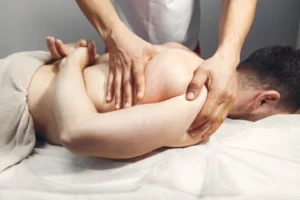 In the realm of alternative therapies, both Rolfing treatment and massage therapy offer unique approaches to addressing muscular tension, promoting relaxation, and enhancing overall well-being. However, despite some similarities, there are distinct differences between the two modalities.
In the realm of alternative therapies, both Rolfing treatment and massage therapy offer unique approaches to addressing muscular tension, promoting relaxation, and enhancing overall well-being. However, despite some similarities, there are distinct differences between the two modalities.
While both Rolfing treatment and massage therapy offer valuable benefits for physical and emotional well-being, they serve different purposes and employ distinct techniques. Massage therapy is well-suited for relaxation, stress relief, and targeting specific muscular issues. On the other hand, Rolfing therapy focuses on structural integration, addressing deeper patterns of tension and promoting overall alignment and balance.
Let’s explore how Rolfing treatment differs from massage therapy.
Understanding Rolfing Therapy
Rolfing, also known as Structural Integration, is a hands-on manipulation technique developed by Dr. Ida Rolf. It focuses on realigning and balancing the body by manipulating the connective tissues (fascia) that surround muscles. Rolfing typically involves a series of ten sessions, each targeting different areas of the body to achieve improved posture, flexibility, and overall structural integration.
The Essence of Massage Therapy
Massage therapy encompasses a wide range of techniques designed to manipulate the body’s soft tissues, including muscles, tendons, and ligaments. The primary goal of massage therapy is to promote relaxation, alleviate muscular tension, improve circulation, and relieve stress. Various modalities, such as Swedish massage, deep tissue massage, and Thai massage, cater to different needs and preferences.
Techniques and Approach
While both Rolfing and massage therapy involve hands-on manipulation of the body, their techniques and approaches differ significantly. Massage therapy typically involves the application of pressure, kneading, and stroking movements to target specific muscles and promote relaxation. In contrast, Rolfing focuses on restructuring the body’s fascia and realigning the entire musculoskeletal system through deep tissue manipulation and movement education.
Focus on Structural Integration
One of the key distinctions between Rolfing and massage therapy is the focus on structural integration. Rolfing emphasizes the relationship between different parts of the body and aims to create better alignment and balance throughout the entire structure. By addressing underlying postural imbalances and restrictions in movement patterns, Rolfing seeks to promote long-lasting changes in how the body functions and moves.
Choosing Between Rolfing and Massage
When deciding between Rolfing and massage therapy, consider your specific needs, preferences, and treatment goals. Consulting with qualified practitioners and exploring both modalities can help you determine which approach aligns best with your wellness objectives and lifestyle. Ultimately, whether you choose Rolfing or massage therapy, prioritizing self-care and investing in your health and well-being is key.
If you are near Tampa and would like to try Rolfing massage yourself, call Williams Rolfing. Living a pain-free life can become a reality when one focuses on the relationship between posture and health, creating a balanced body with every motion.
Picture Credit: Freepik
